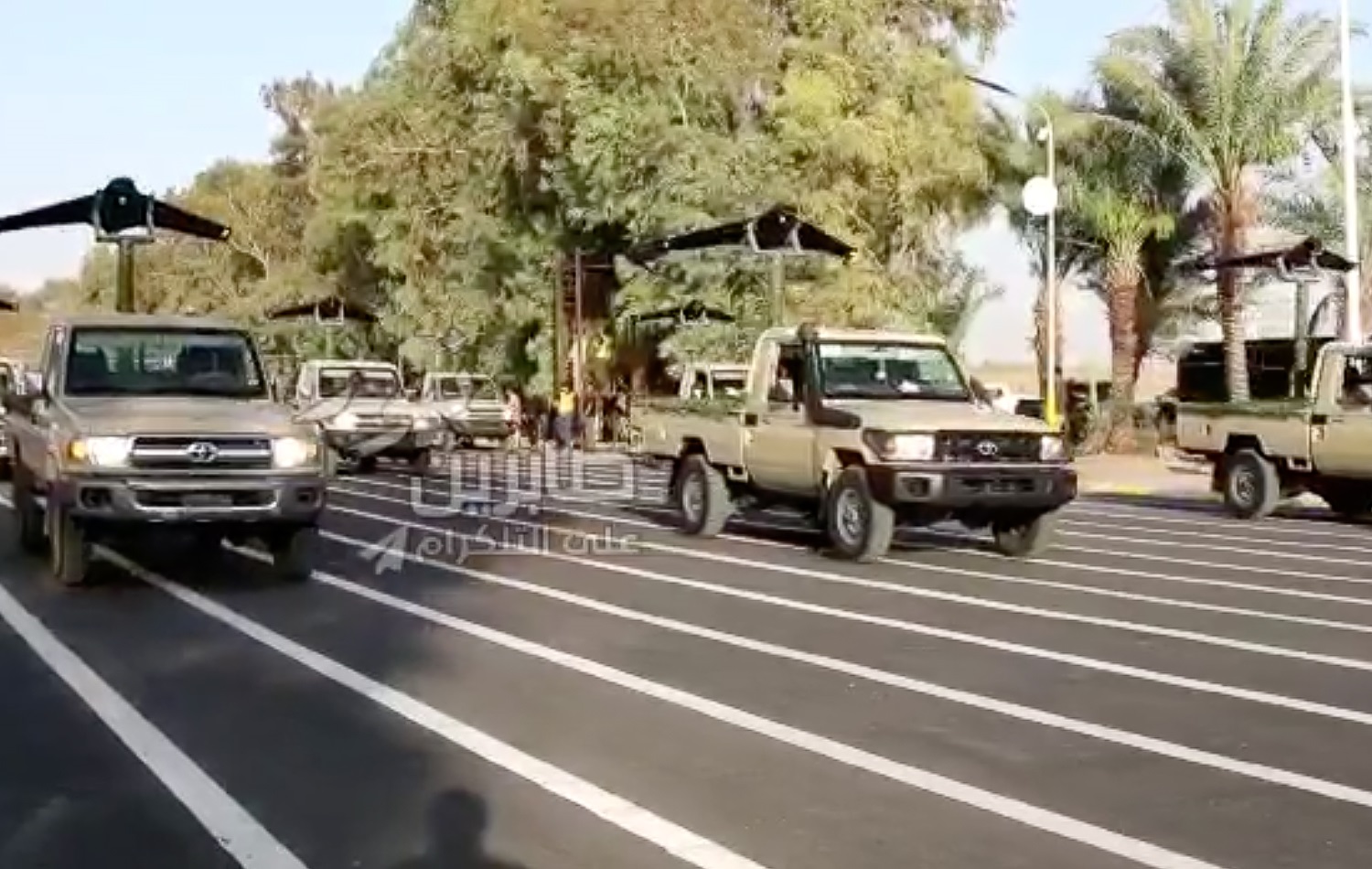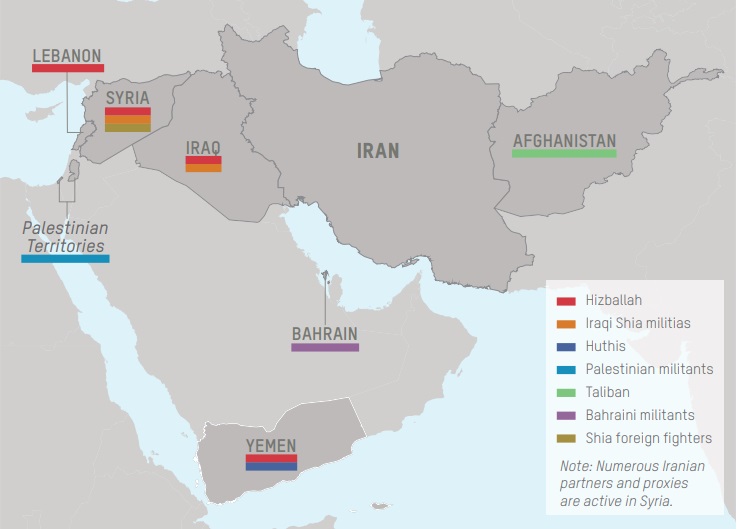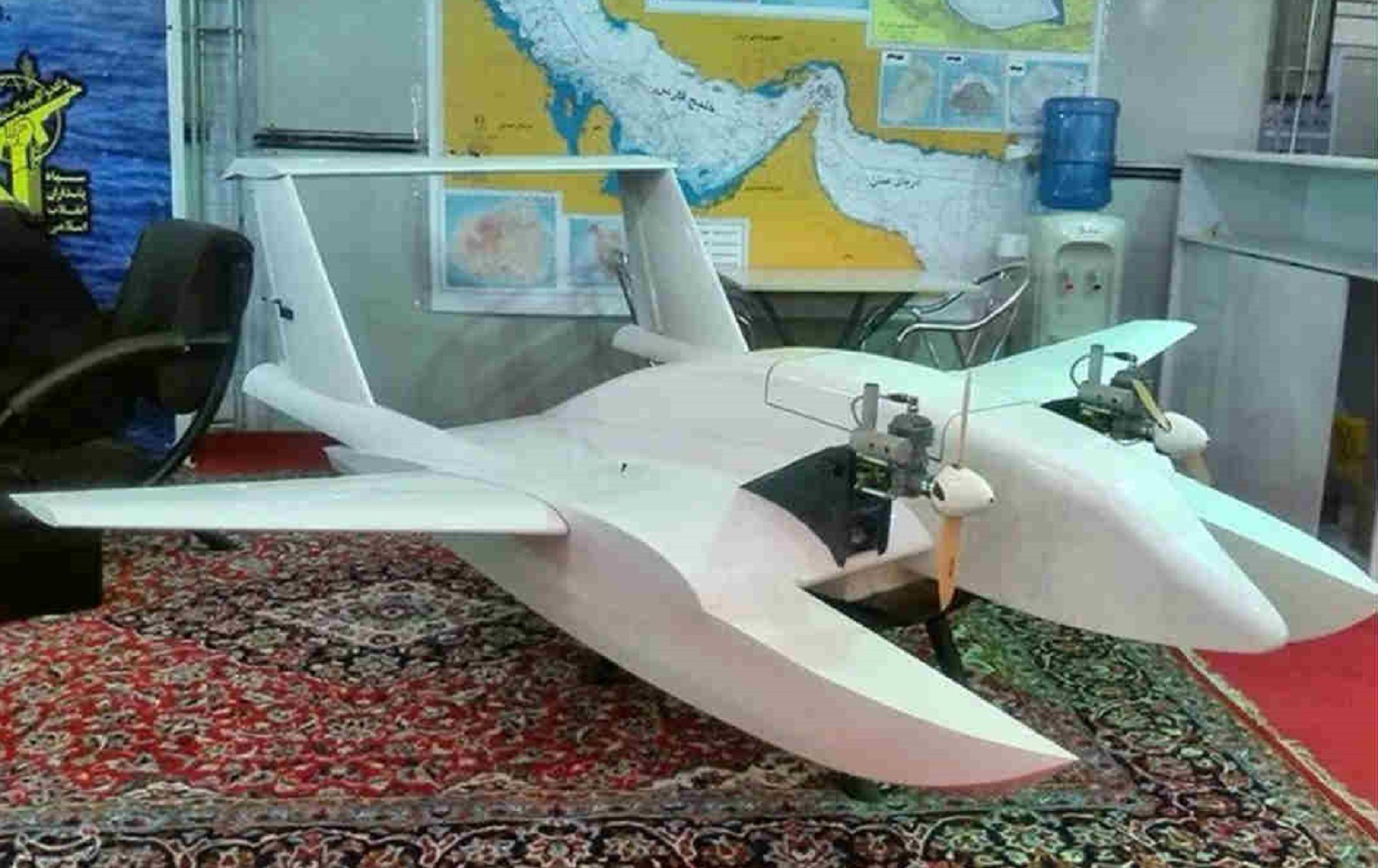ERBIL, Kurdistan Region — In a military parade put on by the Popular Mobilization Forces (PMF) in Baghdad earlier this month, drones were front and centre, carried in the backs of pickup trucks and driven through the streets of the capital, sending a clear message to the United States, which is concerned about growing use of drones by the Iranian-backed militias.
US interests in Iraq have come under frequent attack by rockets and, more recently, drones. The attacks are blamed on the militias who want the Americans to leave the country. Last year, the US installed Patriot air defense systems at bases in Iraq, including Erbil airport hoping that, along with its counter-rocket, artillery, and mortar (C-RAM) systems, US forces would be better protected from aerial attacks. But just over a year later, Erbil International Airport was hit in a drone attack targeting a CIA hangar.
The PMF’s military parade on June 13 was a preview for a bigger celebration planned for June 26, marking the anniversary of the establishment of the Iraqi militia forces that the Pentagon says are drawing attention away from the war against the Islamic State group (ISIS) and have become a “major threat to Iraq.”
Drones are an evolving threat. They can be purchased for a few hundred dollars and are capable of bypassing existing defense systems. In Iraq, drones used by both state and non-state actors have dramatically altered the battlefield, and the Kurdish Peshmerga, the only force in Iraq without a presence in the sky, fear they are being left behind.

Iraq’s drone wars
At the height of the battle to oust ISIS from Mosul, the terror group began using a new tactic, raining down grenades on Iraqi forces from civilian drones equipped with explosives and a camera. It was a new form of warfare from a non-state actor in Iraq and a few years later, drones or unmanned aerial vehicles (UAV) are becoming a weapon of choice for the Iran-backed militias.
Over the past couple of years, the use of drones has increased in Iraq, from the US assassination of Iranian General Qasem Soleimani and PMF commander Abu Mahdi al-Muhandis in a drone strike near Baghdad airport in January last year, to Iraqi militias using drones to attack US interests around the country.
Recently, the Kurdistan Workers’ Party (PKK) has also been trying to benefit from the use of upgraded civilian-grade drones in their fight against Turkey.
“If we look at the non-state perspective, civilian drones are cheaper, you can buy them easily on the web,” Federico Borsari, Middle East and North Africa analyst at the Italian Institute for International Political Studies, told Rudaw English.
Some civilian drones sell for less than a thousand dollars and can be used in an “effective” way, as demonstrated by ISIS, Borsari added.
The PMF lie in a gray area between state and non-state actors. They were officially integrated into the Iraqi army under a 2019 decree from former Iraqi Prime Minister Adil Abdul-Mahdi, but some powerful groups within the PMF operate outside the government’s control and have close ties to Iran.
In May, a leader in the PMF affiliated with the Iraqi Ministry of Defense said there are Iranian-made drones in Iraq ready to be used against US combat troops.
In 2021, there have been five reported drone attacks or attempted attacks in Iraq and the Kurdistan Region. The first was on Erbil airport on April 14. On May 8, Ain al-Asad airbase was attacked by a drone. Drones were shot down on June 6 over Ain al-Asad, over Baghdad on June 9, and in Baghdad on June 16.
Earlier this month, US Central Command said it was concerned about the drones. “We are seeing pressure from Iranian-affiliated militant groups that want to push us out of Iraq, and the latest manifestation of that has been the use of small unmanned aerial systems, or drones,” Commander General Kenneth McKenzie said. "The threat is concerning and we will take whatever measures are necessary to defend ourselves.”
Iran’s drone power
According to a 2019 report by the US Defence Intelligence Agency (DIA), “UAVs are Iran’s most rapidly advancing air capability.”
Iran’s Defense Minister Amir Hatami last year announced that they had three bomb-carrying drones with a range of 1,500 kilometers, marking further development in the country’s drone industry.
These drones are part of a range of military equipment Iran’s Islamic Revolutionary Guard Corps (IRGC) Quds Force has provided to armed groups in the Middle East, including groups within the PMF, according to the DIA report.
“Iran provides a range of financial, political, training, and materiel support to these groups,” the report reads. “Iran’s provision of military hardware has included small arms, ammunition, explosives, improvised explosive devices (IEDs), explosively formed penetrators (EFPs), vehicles, antitank guided missiles (ATGMs), man-portable air defense systems (MANPADS), artillery, rockets, UAVs, and some more-advanced systems, such as ASCMs and ballistic missiles.”

The legality of Tehran arming the PMF is a matter of controversy.
“It is a thorny and very complicated issue,” Borsari said. “States have the obligation to control the use of drones, the same way they control use of other weaponized systems.”
“The PMU [PMF] have been recognized as part of the Iraqi security infrastructure, but when it comes to their relationship with Iran, these relations are not always official, on paper,” he explained. “Receiving weapons from foreign suppliers is not illegal broadly speaking, but these agreements need to be recognized by the state. If PMU receives weapons from Iran, the Iraqi government should approve of this, unless they are received illegally.”
The United Nations General Assembly in 2013 adopted the Arms Trade Treaty to “regulate international trade in conventional arms by establishing the highest international standards and to prevent and eradicate illicit trade and diversion of conventional arms.”
Iran and Iraq are among 54 states who have not signed up to the treaty.
Defence against drones
Civilian grade drones upgraded with ammunition are less accurate but can still be effective against select targets. “They are not very effective, frankly speaking. I think they can be effective against big targets such as warehouses and big military bases, because these drones fly over these places and drop munitions, there is a fair percentage that they will hit something,” Borsari said.
“But when it comes to for example a mechanised column of the Iraqi army or a Peshmerga checkpoint, it is very difficult for civilian grade drones to hit something,” he added. They have no guidance systems and are susceptible to factors like wind.
Suicide drones, that slam into their targets and explode, are more effective. They are often bigger and more technologically advanced than other civilian drones, said Borsari.
“Some have rudimental guidance systems, others are more complex, especially those provided by Iran, which is developing a huge fleet of both drones and loitering munitions,” he said. “We have seen in Iraq and Yemen that these types of drones and loitering munitions have become more common and effective, because they have been used increasingly against military targets in Yemen with good results.”

Houthi drone attacks on Saudi Arabia’s oil infrastructure have increased this year. Last Saturday, Saudi air defenses intercepted a total of 17 drones deployed by Iran-backed Houthis in Yemen.
Drones were used in a September 2019 attack on state-owned Saudi Aramco that knocked out more than five percent of global daily oil production. Houthis claimed responsibility, but United Nations investigators concluded the Yemeni group was not involved.
The US’ first line of defence against the drones is the C-RAM systems.
“C-RAM systems are used in various locations in theater and when possible, tied to Patriot systems in order to bolster defensive capabilities covering service members, U.S. assets, and partners in the region,” spokesperson for Operation Inherent Resolve Colonel Wayne Marotto told Rudaw English.
But these systems cannot always detect small, civilian-grade drones.
“These systems have not proved as effective as they were thought to be. Some drones that have been used have at times been able to bypass these systems, because they were probably smaller drones that remain difficult to detect,” Borsari said.
“However, there were also many times where these drones have been successfully detected and intercepted,” he added.
Iraq’s only force not in the air
One force that has been left out of the skies in Iraq is the Kurdistan Region’s Peshmerga. They are officially part of Iraq’s security forces, but have no air force or drones. The deputy Peshmerga minister said this is a serious shortcoming and blamed Baghdad.
The Iraqi government “has not allowed the Peshmerga forces to have an air force, or own any form of jets or air defense weapons,” Sarbast Lazgin told Rudaw English. “This is all while the Iraqi army is developing their air force capabilities every day, and the coalition [against ISIS] has helped them a lot in this regard.”
This has left the Peshmerga at a disadvantage and unable to defend themselves against aerial attacks.
“Not having drones is a damaging gap. This is an important topic for the Peshmerga forces. Right now it is very important for them to have an air force and new aerial weaponry,” Lazgin said. “Unfortunately, until now the Peshmerga do not have sufficient air defense weapons and cannot properly face any danger, which we always expect to increase. We saw recently that drones were used to perform a terrorist attack on Erbil and target coalition forces.”
He said they have asked the global coalition against ISIS for assistance in obtaining some air power. “We understand that drones are a modern day requirement and are a good substitute to other aircraft… It is essential for us to develop our defenses at the moment and we have asked the coalition to help the Peshmerga forces in providing some types of drones,” Lazgin said.
“We find it essential for Peshmerga forces’ air defense forces to be stronger in order to fend off threats from enemy drones and terrorist attacks, and to preserve the safety of the Kurdistan Region,” he added.
Cover photo: Militia groups of Iraq's Popular Mobilization Forces (PMF) parade drones through Baghdad on June 13, 2021 as seen in this screengrab from video shared by PMF-linked media channels. Photo: screengrab/PMF media



